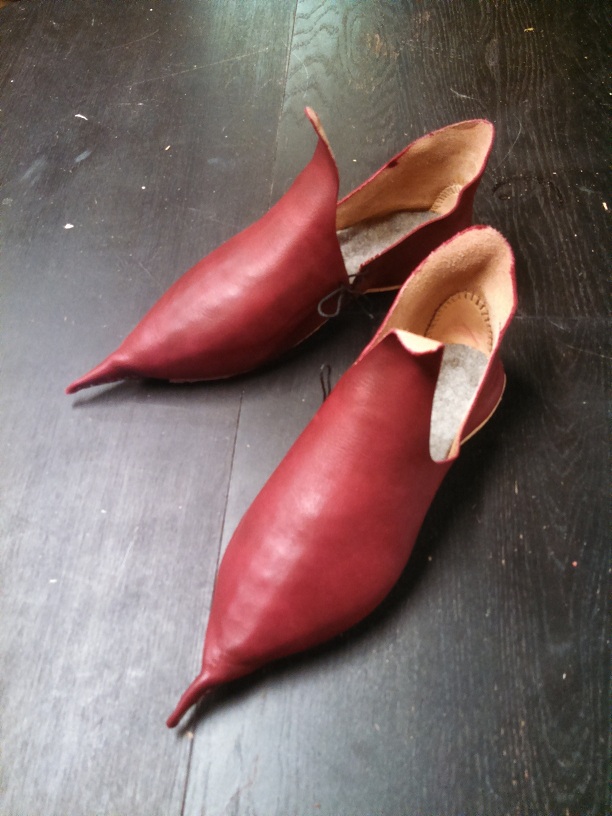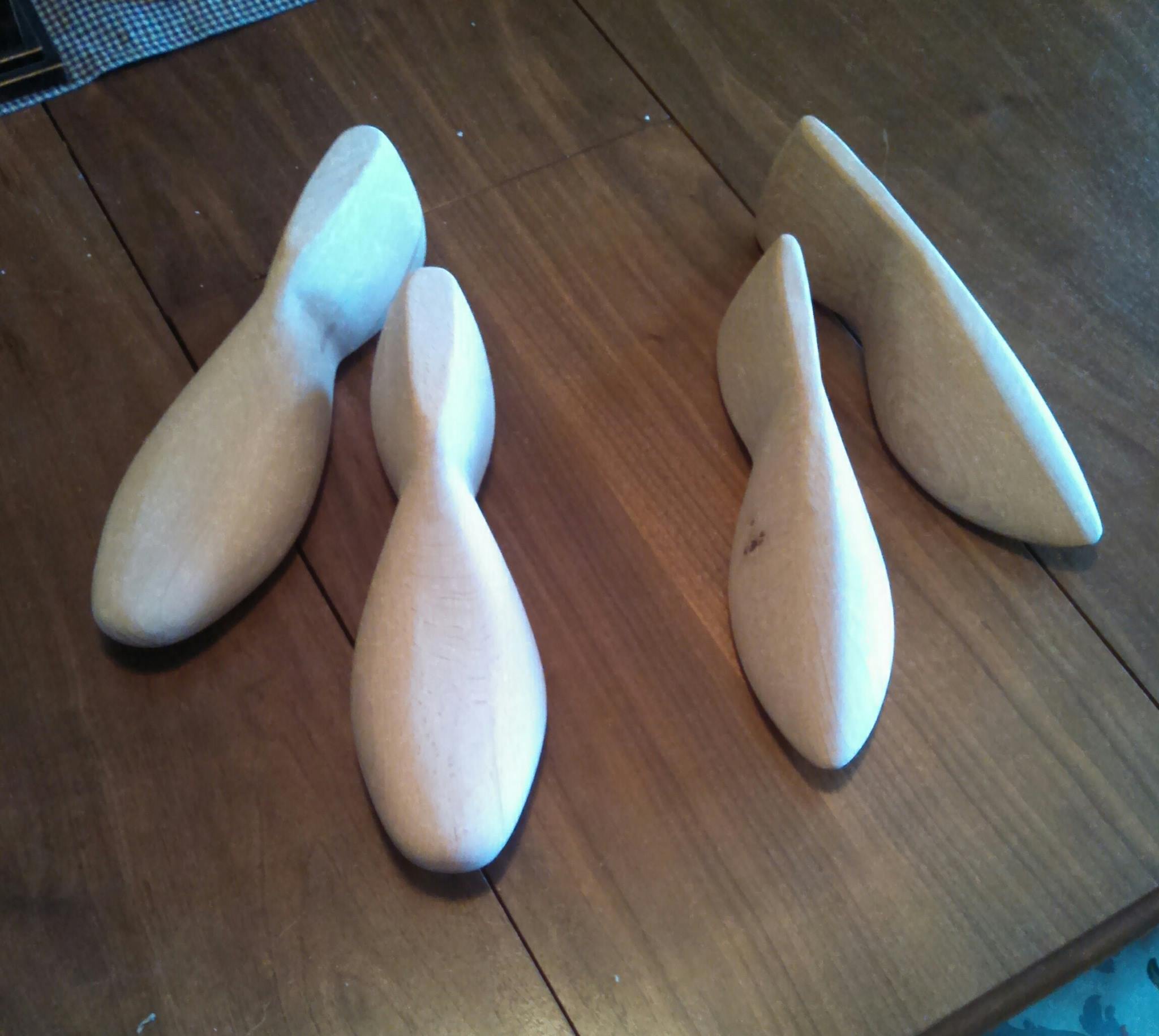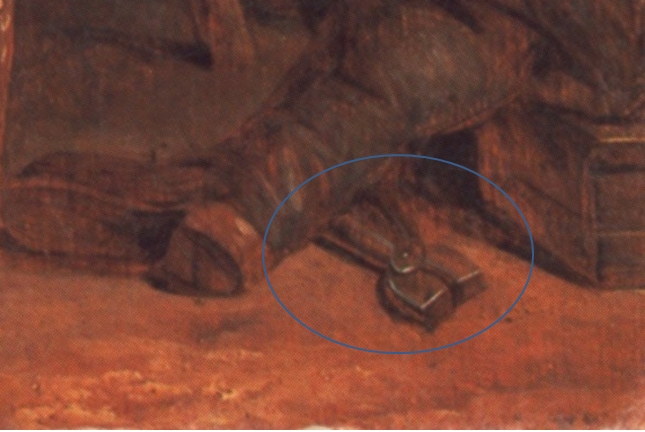I earlier made a pair of Poulaines on a set of modern lasts, and the results were not bad – in fact, I thought they were rather pretty. Of course, we all know that the fit has to be perfect, otherwise they can be as pretty as they like, and they won’t be suitable. As a result, I decided to carve a last based on historical reproductions. First, the finished results, and I apologize for the fuzzy image.

The lasts that I received were appropriate for a mid 15th century shoe, so my task was to scale the last up to suit a larger foot.
Continue reading 15th C. Poulaines Redux, with period lasts! →
If you’ve followed my blog for any amount of time, you’ll note that I’m using vintage modern lasts, typically for men’s shoes, when making my reproductions. This has a variety of issues, the modern look notwithstanding, but also when it comes to closure types other than those that happen over the front of the shoe. I’ve observed that in nearly every instance that I’ve made a shoe with a side closure that the heel ends up being unnecessarily large, and has a propensity to slip off. Giving it some thought, I do think that it has a great deal to do with the last itself. As a result, I was fortunate enough to get my hands on some reproduction lasts, both medieval and Elizabethan.

What makes a last so important, you might ask? Everything! The last is truly the “soul” (no, I’m not falling for that particular pun =) of the shoe. It is more than just a representation of the person’s foot, because if that was all it was, then we would all be wearing foot-shaped shoes (as opposed to just some of us!)
Continue reading Reproduction Medieval and Elizabethan Lasts →
In one of the previous posts, I discussed the use of the hammer and mentioned the lasting hammer or lasting pliers. In this post, let’s talk a little about those tools and what they’re used for.
As part of the shoemaking process, for a lasted shoe, one tacks on an insole to a last, and then the upper is stretched around the last. However, to my knowledge, we don’t really have much evidence for “pliers” specifically for lasting shoes until the 1640s, and that comes from The Shoemaker Teaching the Linnet to Sing, possibly by David Teniers the Younger, 1640s, at the Northampton Museum Collection. Marc Carlson’s site on shoes is an excellent resource, and I cannot recommend it enough. Look at the blunt-nosed pliers-like object, and I think that it’s quite a strong bet that these are used for lasting.

Hopefully, you will agree with me once you read the rest of the discussion.
Continue reading Just Your Ordinary Lasting Pliers… →
Dedicated to the Research and Construction of Chopines, Pantoufles, Zoccoli, Shoes, Boots,and Other Raised and High Heels.


